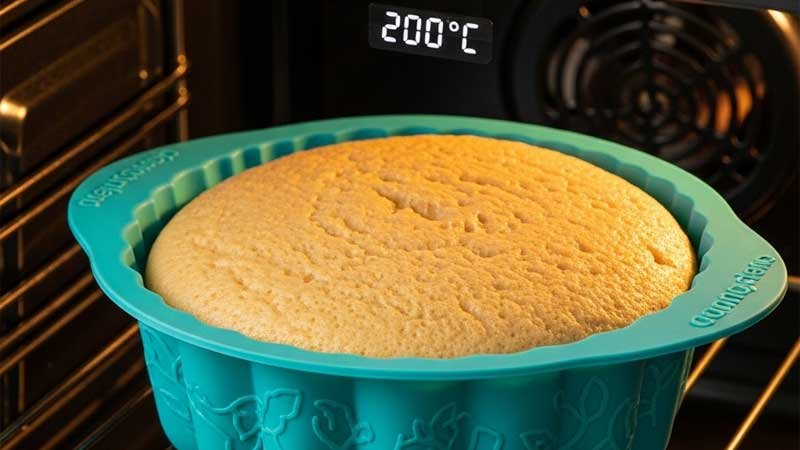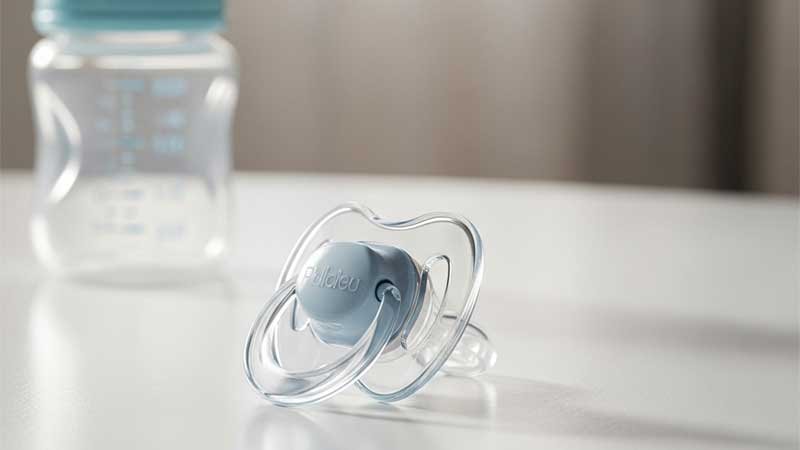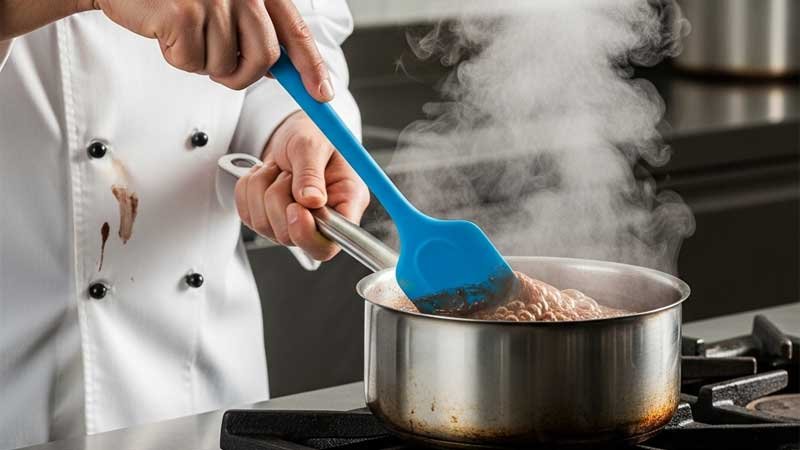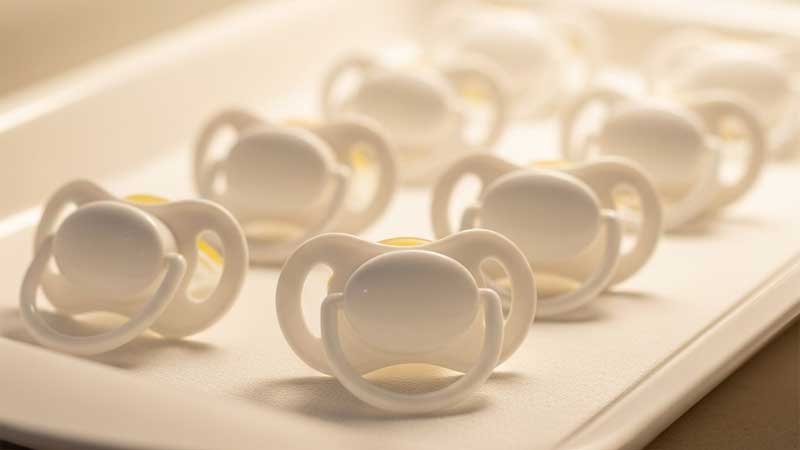Food-grade silicone is widely used in kitchenware, baby products, and food-contact tools. But have you noticed? Different silicone products can behave differently under high heat. These differences come from the silicone’s internal formula.
In this article, we’ll take a closer look at how formulation affects the heat resistance of food-grade silicone. We’ll break down key influencing factors and share real-world examples to help you make informed choices when selecting materials.

Why Is Heat Resistance So Important for Food-Grade Silicone?
Heat resistance is key to making sure food-grade silicone stays safe, strong, and long-lasting. It allows silicone products to work well in the kitchen, even under high heat.
- Handles high cooking heat: Silicone baking mats and molds often face heat over 200°C. If the material can’t handle it, it may break down and release harmful chemicals into food.
- Safe for boiling and steam: Baby items like nipples and feeding bowls often need to be boiled or steamed. Good silicone stays firm and safe. It won’t melt, change shape, or leak anything.
- Stands up to repeated heating: Microwaves and dishwashers cause constant temperature changes. Poor-quality silicone may crack, fade, or get stiff over time.
- Keeps products looking and working right: If silicone gets damaged by heat, it may stop working well or look bad. This can hurt how people feel about your brand.
In short, heat resistance is the backbone of safe and reliable silicone. It helps the material stay clean, strong, and trusted.
What Affects the Heat Resistance of Silicone?
The heat resistance of food-grade silicone isn’t fixed. It’s shaped by its internal formulation and structure. Here are the main things that affect its heat resistance.
Base Polymer Type
The type of polymer used plays a big role. Most food-grade silicone is made from polydimethylsiloxane (PDMS) or polymethylvinylsiloxane (PMVS). These materials have strong silicon-oxygen bonds, giving them natural heat resistance.
For higher performance, some formulations use phenyl- or fluoro-modified silicones, like PVMQ (methyl-phenyl-vinyl silicone rubber) or FVMQ (fluorosilicone rubber). These offer better thermal stability and can handle extreme heat—up to 300°C in some cases.
The molecular weight and vinyl content of the polymer also affect crosslink density, which impacts elasticity and thermal stability.

Curing System
Curing, the process that links silicone chains into a solid network, is key to forming a stable structure. The curing system used greatly impacts how well the silicone holds up under heat.
| Curing Type | Mechanism | Food-Grade Safe? | Heat Resistance |
| Peroxide Curing | Free radical reaction | No (may leave residue) | Good (needs post-cure) |
| Platinum Curing | Addition reaction, no by-products | Yes | Excellent (very stable) |
Most food-grade silicone today uses platinum-cured systems. These create a cleaner, more uniform structure with no by-products, giving better stability, clarity, and odor control.
The amount of curing agent also matters. More agent means tighter crosslinking and better heat resistance, but too much can make the material brittle.
Fillers and Additives
Silicone is naturally soft, so reinforcing fillers are added to improve strength and heat resistance. The most common is fumed silica, a fine powder that blends well with the polymer and strengthens the structure.
Antioxidants and heat stabilizers are also added to slow down aging at high temperatures. For example, iron oxide or carbon black can neutralize free radicals and delay breakdown.
However, balance is key. Too much filler can affect the product’s softness, transparency, or ease of processing. Too little, and it won’t hold up to heat.
Color Masterbatches and Pigments
Color matters too. Some organic pigments break down or release odors at high heat. For heat-sensitive products, it’s safer to use inorganic pigments, such as iron oxide or titanium dioxide. These are more stable and won’t affect product safety or smell.

How Does Heat Resistance Vary Between Different Silicone Formulations?
When designing food-grade silicone products, it’s important to understand that different formulations can vary widely in heat resistance, structure, processing method, and suitable applications. The table below compares some of the most common types of silicone based on their curing systems, heat limits, and typical uses, helping you make informed decisions in both design and material selection.
| Silicone Type | Typical Heat Resistance | Food Grade | Curing Method | Structure & Features | Typical Applications |
| Platinum-Cured Solid Silicone | -40°C to 230°C | Yes | Solid rubber + platinum-catalyzed compression or extrusion | Dense, odor-free, adjustable hardness, heat-resistant | Baking molds, baby nipples, feeding bowls |
| Liquid Silicone Rubber (LSR) | -50°C to 200°C | Yes | Two-part liquid injection + platinum curing | High flowability, automatic mixing, ideal for complex shapes | Baby products, medical tubing, seals |
| High Transparency Silicone | -40°C to 220°C | Yes | Premium formula + refined processing (platinum or LSR) | High purity, glossy surface, excellent clarity | Straws, bottle parts, see-through kitchen tools |
| Foamed Silicone | -40°C to 180°C | Some are | Foaming agent + heat cure (compression or extrusion) | Lightweight, soft, insulating, shock-absorbing | Oven mitts, placemats, seat cushions |
Does Higher Heat Resistance Always Mean Better?
In food-grade silicone formulation, heat resistance is important, but higher doesn’t always mean better. Every formula is a balance of performance, cost, and processability.
To improve heat stability, formulators may increase the ratio of phenyl silicone rubber, raise the crosslink density, or add more heat stabilizers. These adjustments can make the material more stable at high temperatures. But they may also raise the hardness, reduce flexibility, lower flowability during processing, and increase the overall cost.
Other properties may also be affected. For example, higher crosslink density improves thermal performance but can make the material feel stiffer. More fillers can help with heat resistance but reduce clarity. Brightly colored silicone may require stronger heat-stable formulas to protect the pigments.
That’s why a good silicone formula always aims for balance. It should meet the heat resistance needed for the product while maintaining good mechanical strength, visual quality, production efficiency, and cost control.

How to Evaluate the Heat Resistance of Food-Grade Silicone?
To truly understand how it performs under heat, several professional tests are needed.
- Heat aging test is one of the most common methods. It involves placing silicone samples in a high-temperature oven for a set period, then checking key changes in hardness, tensile strength, and elongation. For example, a high-quality silicone baking tray might show less than 2% loss in tensile strength after aging at 250°C for 72 hours—an excellent sign of thermal durability.
- Thermogravimetric analysis (TGA) measures how much weight a material loses as it’s heated. This helps identify its thermal stability and decomposition point. A good food-grade silicone typically loses less than 5% of its weight at 300°C.
- Differential scanning calorimetry (DSC) can be used to observe heat transitions and curing level.
- Compression set test is often used for seal-related silicone products. It shows how well the silicone bounces back after being compressed at high temperatures. A lower value means better long-term performance under heat and pressure.
- Migration tests are also essential. They ensure that no harmful substances are released when the silicone is exposed to heat. These tests follow FDA or EU food contact standards. For instance, a baking mat might be tested at 230°C for 4 hours, and if no migration is detected, it’s considered food-safe.
- Other important tests include hot air aging (70°C–250°C), heat deflection temperature (HDT), and continuous use temperature (CUT), which simulate long-term real-world use.
With this combination of tests, you can evaluate whether a silicone product truly offers safe and stable heat resistance for everyday kitchen use.

How to Choose the Right Heat Resistance Level for Your Product?
When developing a custom silicone formula or OEM product, selecting the right level of heat resistance is a key first step. It ensures a proper balance between performance, safety, and cost. Here are a few important factors to consider:
- Working temperature range: Know both the typical working temperature and the short-term peaks. For example, will the product face boiling water, oven baking, or steam sterilization? Or will it just sit at room temperature?
- Frequency of heat exposure: Products like baby pacifiers or silicone straws often go through repeated heating, cleaning, and sterilization. These need formulas with higher thermal stability.
- Type of food contact: Will the product be used with oily, acidic, or highly pigmented foods? These can speed up aging or cause staining and odors. In such cases, the formula should be optimized for chemical resistance and low migration.
- Visual or tactile requirements: If softness, color, or transparency are key selling points, the heat resistance must be balanced with appearance and feel. Higher heat stability can sometimes reduce flexibility or clarity.
By clearly defining these conditions, material suppliers and manufacturers can match the right silicone grade to your needs. This avoids overdesign that drives up cost, or underperformance that risks product failure. A well-chosen heat resistance level protects the product during real use—without going over budget or missing your market goals.
Conclusion
Heat resistance isn’t a fixed value. It depends on several factors working together, such as the base polymer, curing system, fillers, and product structure. By understanding these formulation differences, you can choose and customize silicone more wisely, ensuring better safety, durability, and overall experience.
If you’re developing baking molds, baby gear, or food-grade utensils and aren’t sure which silicone material to choose, feel free to reach out. We offer custom formulation advice and sample testing to help you find the right solution.